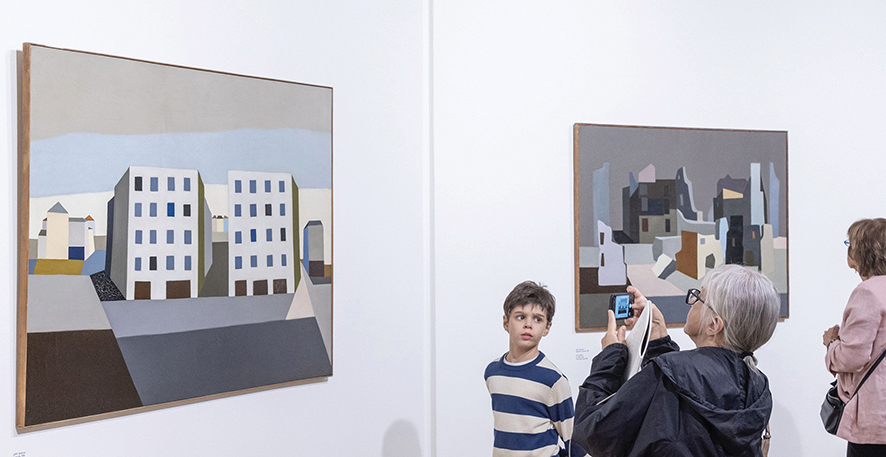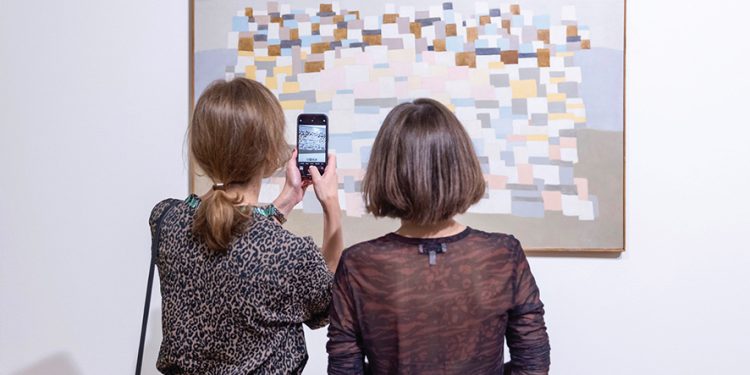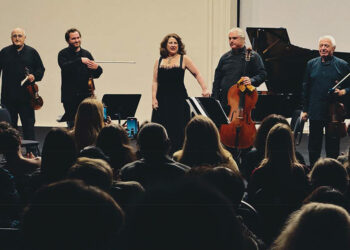A small but captivating art exhibit called Silent Cities is on display in Tbilisi until March 30 – it portrays various styles of cities and architecture through photographs, paintings, and sketches created by Vera Pagava.
Pagava is a Georgian native who grew up in France. She was born in 1907 and her family later moved to Paris when she was a teenager. She started her career as a painter, and Silent Cities showcases pieces of her work from the 1950s until the 1980s, when her work started to become more abstract.
Upon entering TBC Concept on Marjanishvili, you will see that the first part of the exhibition is in a room on the right-hand side. Guests will find historical photographs and documents covering some of Pagava’s more important projects.
“These encompass her expansive fresco for the Vatican Pavilion at the World Expo in Brussels (1958) and an abstract triptych designed for the Telecom building in Dijon (1980),” Atinati’s website states.
One wall in the gallery is adorned with a series of nine sketches Pagava created with lead pencil. This is the first time the collection, Venice (1960), is being revealed to the public. This work shows Pagava’s pointillist technique, showcasing why this is her preferred method when creating art with a pencil.
“I can draw lines, but that doesn’t express what I have to say. A line is not plastic enough. I type, point by point,” said Pagava written on the Galerie Chauvy webpage. “The shapes of these pieces appear gradually, each point resting on the one before it. This style, like the typed symbols style, injects a poetic opening into the urban fabric.”
The glass cases in the exhibit enclose a selection of books that show Pagava’s work in correlation with the poet Pierre Lecuire. She created pieces that were in sync with Lecuire’s current work. Aside from that, there are pieces on display that are pulled from AC/VP (Association Culturelle Vera Pagava) archives and a Georgian rendition of an essay by Canadian author Lisa Robertson who also had a focus on architecture and cities.
A book that was designed by Timur Akhmetov and released by Kona Books is also on display at the exhibition, highlighting an essay called “Point by Point” that was written by Nina Akhvlediani, a co-curator of the galley. The book also includes a poem dedicated to Pagava that was written by Lecuire.
After browsing the room, guests can walk upstairs and enter the gallery that displays Pagava’s paintings.

“The exhibition introduces to the public a few works on loan from AC/VP and other collections, such as the set of paintings also known as ‘silent architecture,’” Atinati writes. “Pagava’s distinct abstract painterly style is evident in this body of work, some of which were initially included in exhibitions at Galerie Darial by Thamar Tarassachvili-Taly, a close confidant. Silent Cities also features archival records from Pagava’s exhibitions at the same gallery.”
The gallery, Darial, is named after a pass in the Caucasus Mountains that links Georgia and Russia. Pagava had a series of paintings that launched the galley in 1972, and she remained as its main artist until it shut its doors in 1996.
The paintings in Silent Cities are beautifully colored using pastels and earthy tones. This exhibition shows Pagava’s abstract work with buildings, so some lines are a little slanted and buildings look out of proportion, making it interesting to understand what Pagava was thinking about as she was curating each piece. It’s also known that although her paintings shifted to abstract works of art, she still often titled pieces with real locations or environments.
Pagava’s work has been displayed in many places around the world. It has been showcased the most in France at the Jeanne Bucher Gallery, but has also made appearances in Sweden, Denmark, Germany, Italy, Austria, Belgium, and the United States. Her work is currently in the National Museum of Georgia, the Centre Pompidou – National Museum of Modern Art, the Museum of Modern Art of Paris, the Museum of Fine Arts of Dijon, and the Unterlinden Museum of Colmar.
Pagava died in March 1988 at the age of 81. Now, just like other wonderfully talented artists, she will be remembered through her artwork at displays such as this one for many years to come.
The exhibition will remain at TBC Concept on Marjanishvili until March 30, 2024.
“Painting reflects us; it is a miraculous mirror in which the outside world sees our inner world; talent is the means of communication between us and life, men, heaven and earth,” Vera Pagava wrote in a letter to Roger Hilton, Montrouge, on April 15, 1936.
By Shelbi R. Ankiewicz














